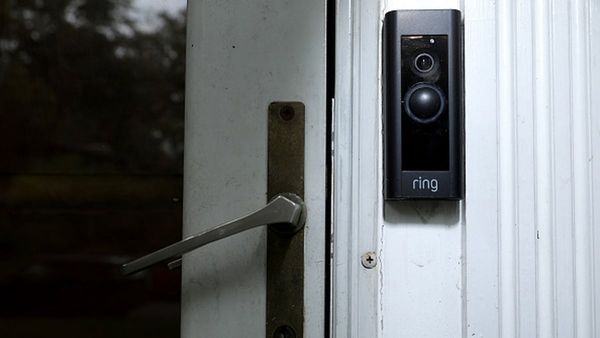On his first day in office, President Donald Trump signed an executive memorandum prohibiting new offshore wind leasing for all areas of the U.S. Outer Continental Shelf and directing his Cabinet to review previously approved projects.
The president’s animosity toward wind turbines already was well-known, going back over a decade to when he couldn’t stop an offshore wind farm from being built near one of his golf courses in Scotland.
“We don’t allow windmills,” he said at an August Cabinet meeting. “We’re not allowing any windmills to go up. I mean, unless there’s a legal situation where somebody committed to it a long time ago.
“They’re ugly, they don’t work, they kill your birds, they’re bad for the environment,” he added.
That sentiment, as well as the president’s first-day memo, set the tone for a dramatic reduction in federal support for wind energy, especially projects located offshore.
Over the last nine months, the Interior, Energy and Transportation departments announced a series of approval and funding rescissions for wind projects off the coasts of the United States. The administration’s stated reasons for the changes include a preference for energy-dense sources of power, such as that generated by fossil fuels and through nuclear energy, an interest in being more selective when it comes to federal subsidies, and what some experts call unfounded concerns that offshore wind turbines harm whales and birds.
The departmental moves, as well as provisions in the GOP’s recent reconciliation bill that limited President Joe Biden’s tax credits for renewable energy development, have rocked the entire wind industry. But it’s the offshore sector that has felt the most pain.
Calling this year’s rollbacks “absolutely terrifying,” Kris Ohleth, director of the think tank Special Initiative on Offshore Wind, said the Trump administration was “completely undermining and undercutting a very valuable sector and industry to the U.S. market.”
“Not only can we be providing tens of thousands of jobs, but also billions of dollars in economic development, onshoring manufacturing, and of course the electricity reliability and affordability that we all need so much right now with demand rising and supply declining,” she said. “It’s an industry that is absolutely needed in this country and one that is under consistent attack by the White House, very deliberately.”
Stop-work order for Revolution Wind
Perhaps the most high-profile example of current federal wind energy policy is a 704-megawatt project off the coasts of Rhode Island and Connecticut known as Revolution Wind. The project has been under construction with offshore wind developers Orsted and Skyborn Renewables since 2023 and is set to be operational next year. If completed, it would power 350,000 homes.
But the Interior Department’s Bureau of Ocean Energy Management — the federal permitting authority for such projects — derailed that plan in August when it issued a stop-work order on the project, which at the time was 80 percent complete.
Orsted and Skyborn filed a legal challenge against the order in early September, saying they received all required permits in 2023 after a yearslong review process and had already spent $5 billion on the project. It would cost $1 billion to break away from the project at that point, the developers said. A U.S. District judge for the District of Columbia granted a preliminary injunction, temporarily allowing construction to proceed.
In addition, a US Wind project off the Maryland coast has been halted amid attempts to revoke its permitting. And JERA Nex BP stopped development on its Beacon Wind project near Massachusetts last week, saying it would wait for a more favorable time to resume.
One of the administration’s chief objections to wind energy is its intermittency. Officials have said they’re looking for energy sources that can provide baseload power with greater energy and capacity density, measurements that gauge how much energy sources can provide relative to their cost and physical footprint. Wind power, they say, is less efficient when considering those metrics, compared with sources such as fossil fuels and nuclear power.
“Under this administration, there is not a future … for offshore wind because it’s too expensive and not reliable enough,” Interior Secretary Doug Burgum said in a September press conference.
Ohleth said federal efforts to stall projects create “an absolute chilling effect to the market confidence in the U.S. energy sector.”
“Permits are not worth the paper they’re written on anymore,” she said. “We have no guarantee from the government, even when there’s a 10-year process that’s followed to the letter of the law.”
Efforts to stymie the offshore industry also have drawn attention on Capitol Hill. Sen. Sheldon Whitehouse, D-R.I., has criticized the Trump administration for weighing in on the Revolution Wind project and the effect that could have on his own constituents.
Whitehouse’s frustration seemed to reach a fever pitch Oct. 22, days after Burgum told an American Petroleum Institute audience he would not offer offshore wind support in exchange for a deal on permitting legislation.
“Off my state, they dropped an illegal ‘stop work’ order on a project nearing completion, with $4 billion invested and every permit in place,” Whitehouse said last week. “On Monday, Secretary Burgum declared that he had no interest in including offshore wind in a permitting reform proposal. Well guess what? Unless these illegal acts stop and unless offshore wind is included, there will be no permitting deal. End of story.”
Debate over federal subsidies
At the API event, Burgum said the offshore wind industry had flourished only because of government subsidization. “If anybody’s continuing to build [offshore wind], their only argument is, ‘oh, we’ve already started, and you should let us finish,’” he said.
Burgum and Energy Secretary Chris Wright have argued that the administration’s objection to renewable power projects is more about the appropriation of federal subsidies for those energy sources than it is about the technologies themselves.
“Thirty-three years we’ve subsidized wind and solar power in the United States. That’s enough,” Wright said in September. “If you can’t rock on your own after 33 years, maybe that’s not a business that’s going places.”
The administration advocated for rollbacks of previous federal tax credits for renewable energy projects during the July reconciliation process. The resulting law cut several years from the timeline for wind and solar power projects to qualify for credits that had been created under Biden’s reconciliation law.
Burgum drew a cost comparison last week, suggesting offshore projects had to rely more on the federal help, through tax credits, than wind projects on land did.
“We’ve got onshore wind in North Dakota. I’m familiar with the industry,” said Burgum, North Dakota’s governor from 2016-24. “But this offshore thing exists only because of the subsidies. Literally, when the Big Beautiful Bill passed, that was the end of the offshore wind industry.”
But the credits that were in place for offshore projects, Ohleth said, are “absolutely in line with the history of subsidies to bring new energy and any new technology to market, whether it’s developing a tin can or developing nuclear power.”
“There is a history in this country of using federal subsidy to create and incentivize a market that is in line with a public policy need,” she said.
Land-based turbines fare better?
Wind farms on land, such as those in Texas and Iowa, may fare better under the Trump administration because the permitting jurisdiction may fall more under state or local authorities, experts say.
Offshore wind projects are deployed in federal waters and therefore are subject to federal permitting and environmental reviews, said Doug Vine, director of energy analysis at the nonpartisan think tank Center for Climate and Energy Solutions.
By contrast, land-based wind farms require different types of permitting from different levels of government depending on the nature of the project. While projects on federal lands still fall under federal jurisdiction, state and local governments have more control over projects on private land.
Some states have had success adding land-based wind projects in 2025, including major installations in Texas and Maine earlier this year. But the DOI, citing what it called “crucial legal deficiencies,” canceled a project in August that had been slated for construction on largely federal lands in southern Idaho. The Biden administration had approved the project in 2024.
Land-based technology also has the advantage of lower construction costs and decades of already successful use.
“Land-based projects are far, far less expensive than offshore wind,” Vine said.
“Offshore wind is newer. It’s a much more challenging environment to install. And we haven’t operated many yet,” he said. “The equipment is much larger, grander. So there’s a lot higher costs — upfront costs — for offshore wind.”
“In the absence of [federal] subsidies, I think all the modeling that’s been done clearly shows we’re still going to see solar developed, we’re still going to see wind,” Vine said.
But offshore wind projects? “Those will struggle,” he said.
The post Offshore wind projects feel brunt of Trump policy decisions appeared first on Roll Call.







